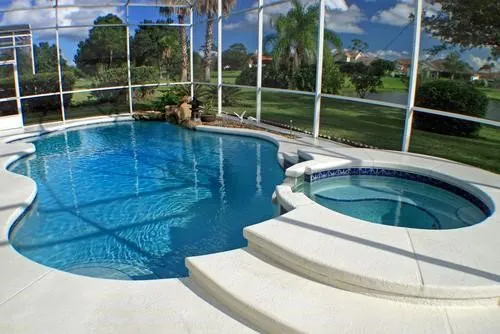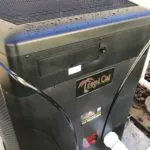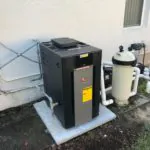Heat pump pool heaters are becoming more and more popular in Central Florida.
It's sometimes tough to distinguish between pool heaters because many of the marketing messages focus on benefits, not on what actually makes one pool heater different from another.
We've found that a key feature that separates a good quality heat pump pool heater from a poor unit is the type of heat exchanger used by the manufacturer.
Table of Contents
What is a heat exchanger in a pool heat pump?
The heat exchanger actually does the bulk of the temperature change in a heat pump pool heater. Essentially, water is run across a hot coil, the water picks up heat as it runs across this hot surface, and then it's pumped back into the pool. We like to use two analogies:
- Firstly, it's like taking a hot pan directly off of the oven and running water over it at the sink. The water hitting the pan usually makes a sound you can hear, and the water gets so hot that steam comes off of the pan. It's hot to touch that water for a few seconds because the heat from the pan transfers to the water. That is what happens when the water runs across the hot surface.
- Secondly, it's like sitting in a bathtub and turning on the hot water again after you've already been in the tub for a while. Down by your feet, you can feel that hot water mixing in with the colder water, but the whole tub has not yet heated up. You'll need to keep that hot water flowing into the tub for it all to feel comfortable again. That is what it's like for the heat pump Pool Heating Services to heat your pool.
Most of a heat pump pool heater's efficiency comes from how effectively it can transfer this heat from the heat exchanger into the pool. That's why it's called a heat “exchanger.” It is exchanging heat from one surface (the coil) to another (the water).
Tube-In-Tube
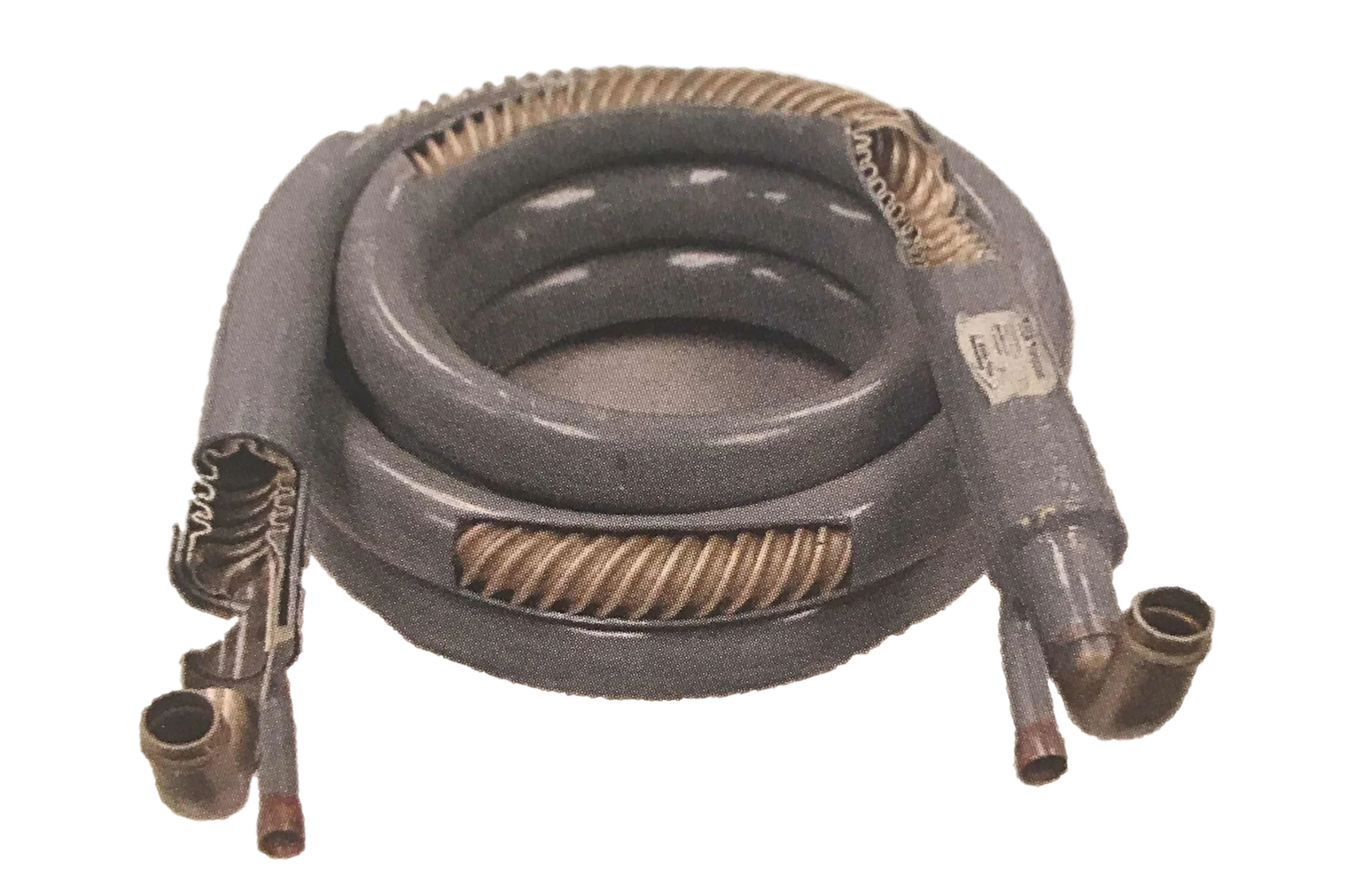
Traditionally, heat pump pool heaters have had what's called a “tube-in-tube” heat exchanger. The water flows through a tubed pipe, and on the inside of that pipe is a heat exchanger coil (usually made of an alloy called cupronickel). The water flows between this outer-tube pipe and the inner-tube heat exchanger coil and picks up heat as it flows through it. This device was effective at heating the water, but one drawback to this style is the need to really push that water through that tube (it won't just passively “flow” through that tube).
ThermoLink
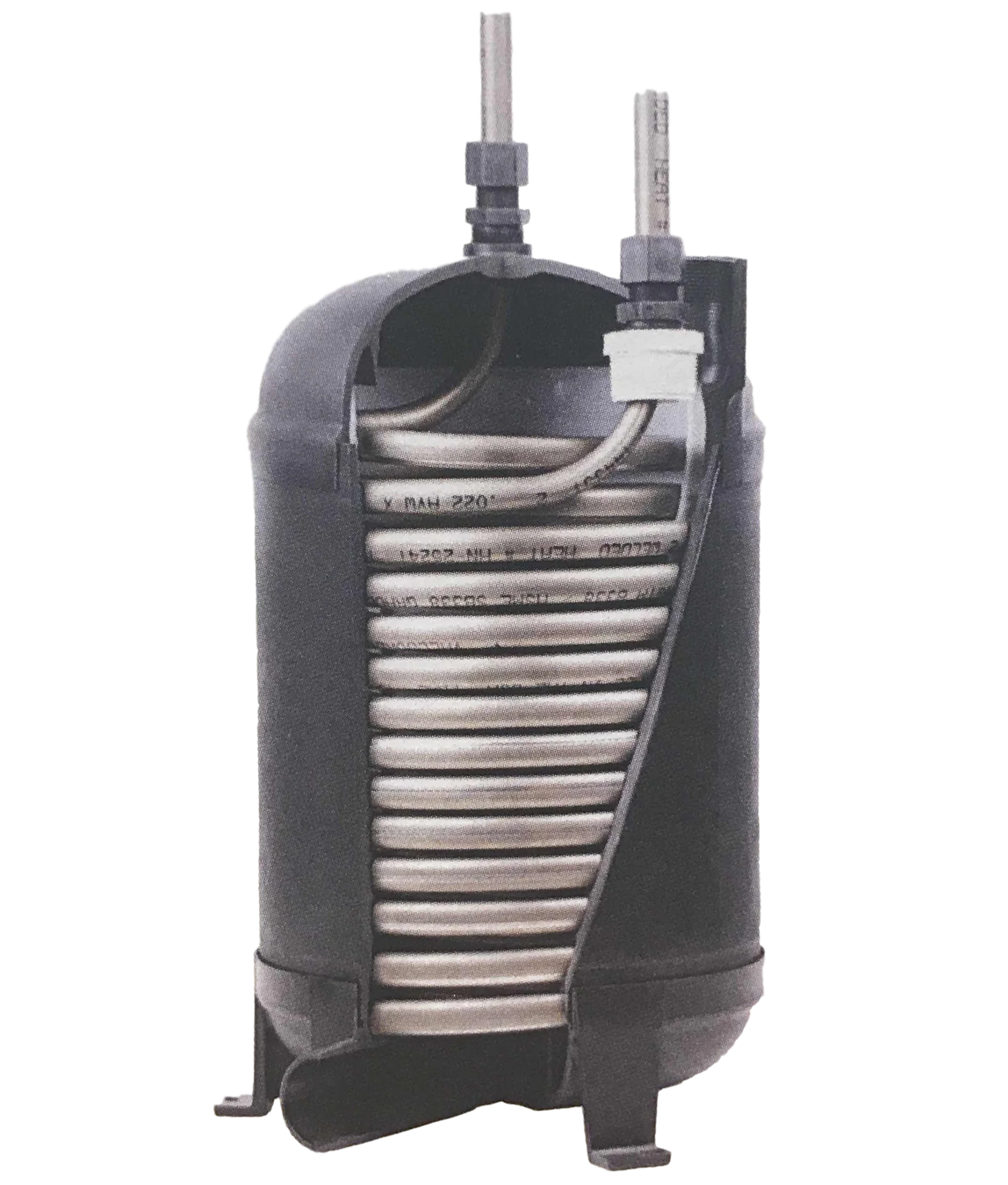
AquaCal and Tropical heat pump pool heaters have been beautifully engineered with a “ThermoLink” heat exchanger. The water flows into the top of the heat exchanger assembly from the top. Then, it uses gravity to flow down to the exit valve at the bottom of the assembly. The water is heated much more passively as it flows like a waterfall through the assembly. Plus, the coil is made from titanium instead of the traditional cupronickel. The cupronickel alloy is much more susceptible to weakening from sanitizers and chemicals found in pool/spa water. Titanium is much longer-lasting than cupronickel because it is virtually impervious to water-chemistry damage (which is why AquaCal and TropiCal units have a lifetime heat exchanger warranty).
A variable-speed pool heat pump needs ThermoLink
In the past, when single-speed pool pumps were the norm, tube-in-tube heat exchangers were sufficient because the pump would always run at the same speed (pressure). In modern pool setups, we are seeing that two-speed or variable speed pool pumps are the new normal (new regulations will soon make them required by code). These pool pumps aren't always running at the same “speed” (more accurately, they vary the water pressure).
Having a pool heater with a regular tube-in-tube heat exchanger renders the benefits of a variable-speed pool pump useless. That is because the pool pump must keep the water pressure at a high level in order to push the water through that tube-in-tube assembly. The patented ThermoLink heat exchanger in the AquaCal heat pumps allows the pool pump to ramp itself down to lower pressures, as low as 1560 RPMs. The tube-in-tube assembly has to run at over 2350 RPMs, a 33% decrease in efficiency. The ThermoLink heat exchanger will save customers approximately $25-94 monthly compared to tube-in-tube heat exchangers.
If you're interested in a no-pressure, professional estimate, fill out our request form below!
Oops! We could not locate your form.

